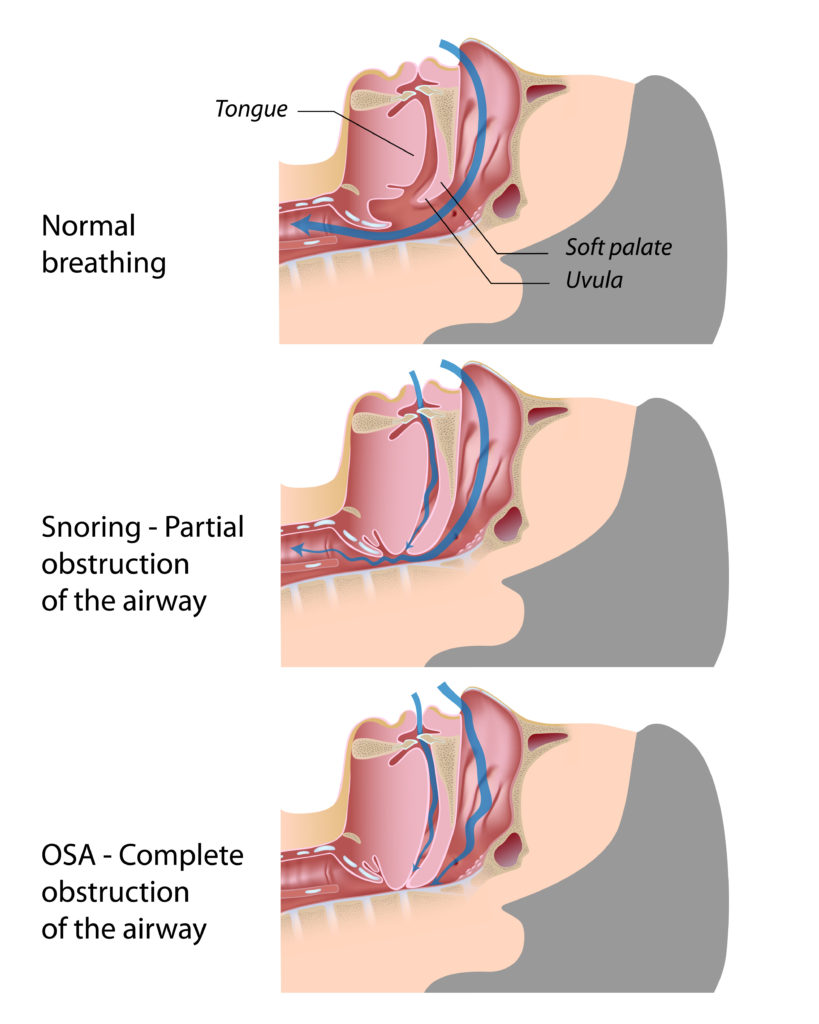What is a Sleep Breathing Disorder?
Sleep-disordered breathing encompasses a range of conditions that cause abnormal breathing during sleep. These disorders can affect both men and women, as well as children. Specifically, sleep breathing disorder is characterized by difficult or complete cessation of respiration while asleep.
Sleep-related breathing disorders can have a huge impact on your overall health, leading to serious consequences.
Types of Sleep Breathing Disorders
Sleep-related breathing disorders are grouped into four main diagnoses:
- Obstructive Sleep Apnea (OSA)
- Central Sleep Apnea
- Sleep-Related Hypoventilation
- Sleep-Related Hypoxemia Disorder
At Dr. Wenrick’s practice, the sleep breathing disorder we most often treat is Obstructive Sleep Apnea (OSA).
About OSA
Sleep is an important part of our human lives. If we do not get enough quality sleep, we suffer. With OSA, a person is very likely not getting the kind of sleep that is needed for their body and mind to function properly. So what is OSA and how does it affect those with the disorder?
Let’s break it down – OSA is characterized by a collapse (or obstruction) in the airway while we sleep. An instance of complete or near cessation of breathing is called an apnea. Those are the main characteristics that make up the disorder of Obstructive Sleep Apnea.
Severity of OSA
There are three different levels of Obstructive Sleep Apnea, and the health consequences increase with each. The ranking considers a patient’s AHI (Apnea-Hypopnea Index), which represents the number of apnea events per hour of sleep:
- Mild OSA: AHI of 5-15
- Moderate OSA: AHI of 15-30
- Severe OSA: AHI of more than 30
As you can see, apneic episodes (cessation of breathing) can occur hundreds of times per night making this a very dangerous condition if untreated.
OSA is Common Among Americans
Obstructive Sleep Apnea affects approximately 4% of men and 2% of women. It is believed that only 10% of people who suffer from OSA receive treatment, leaving a large majority undiagnosed. In fact, according to the American Academy of Sleep Medicine, 80-90% of cases remain undiagnosed.
People suffering from sleep apnea may not be aware that they have the disorder. Often times, patient’s spouses report them having heavy snoring and gasping episodes during sleep. Therefore, we encourage you to explore our website to find out more information about OSA and the symptoms associated with the disorder.
